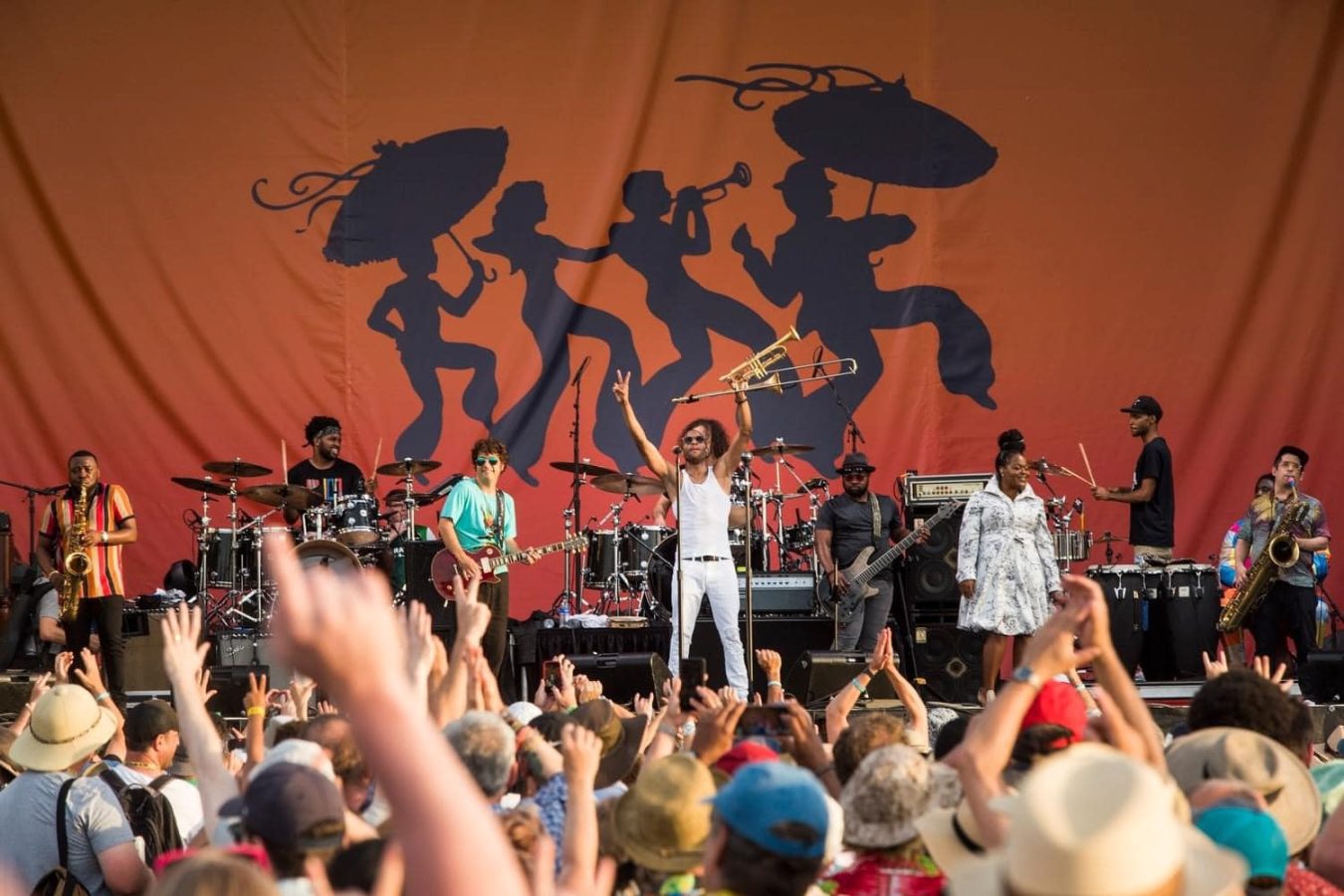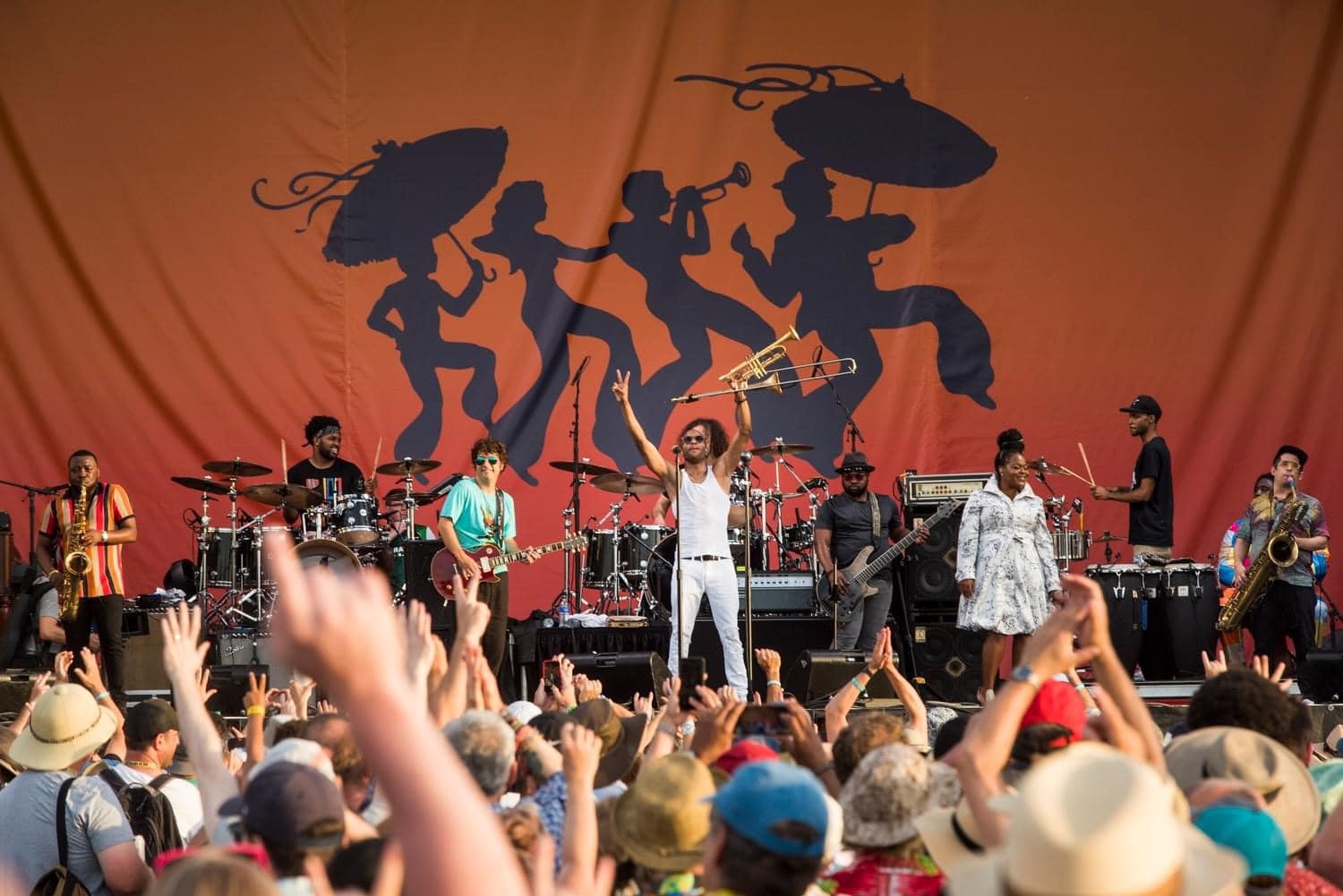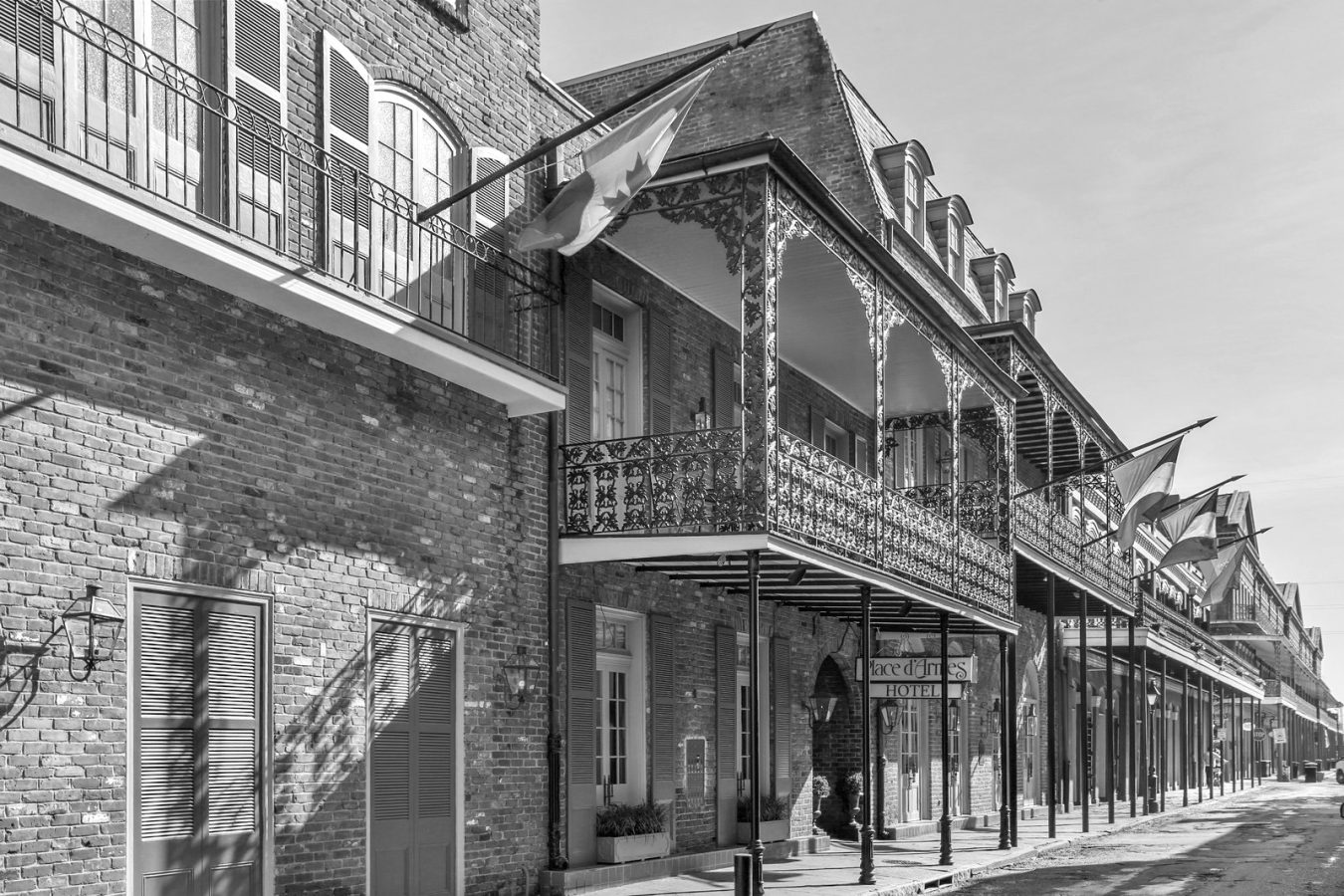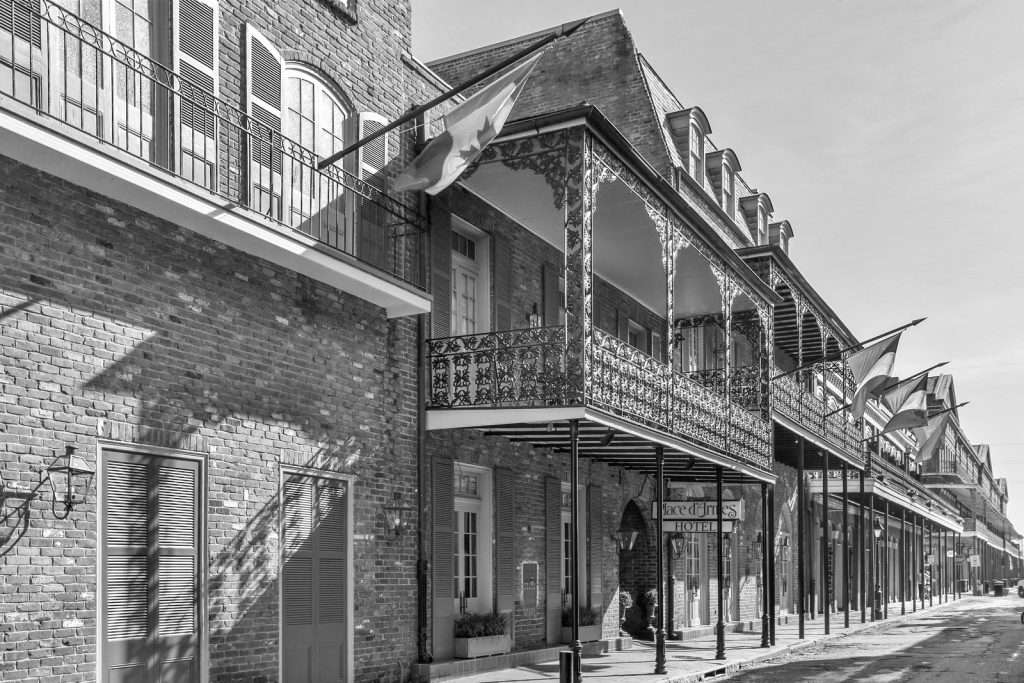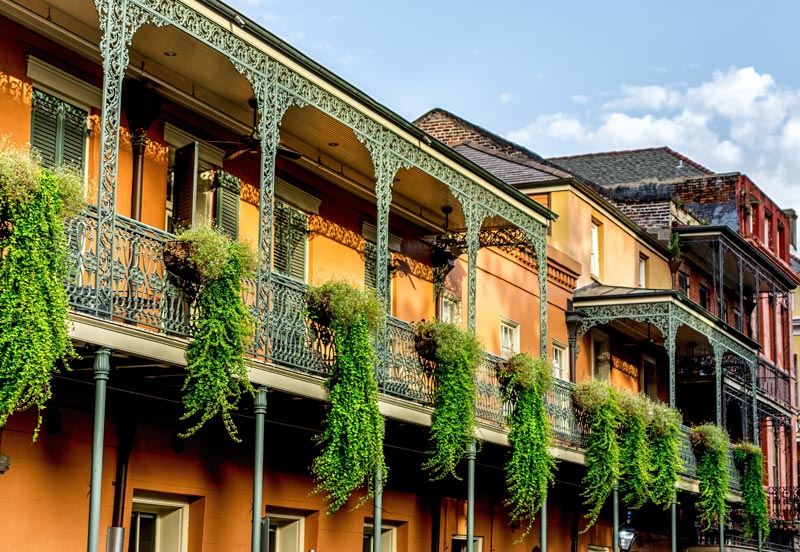Year at a Glance in New Orleans
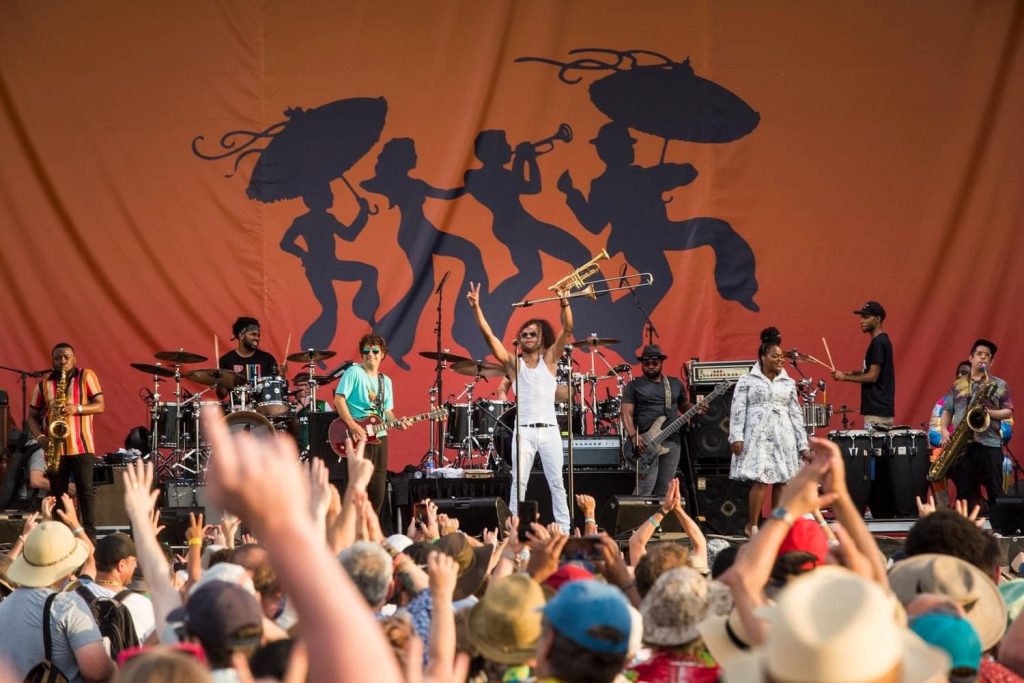
From major music and cultural events to the festivals that honor just about every local food there is, New Orleans celebrates life like no other city. From the fabulously unique traditions like Reveillon and Super Sunday to the Saints football season, the city doesn’t stop eating, drinking, and celebrating. To give you a glimpse of just how much is going on in New Orleans all year round, here’s a quick look at the annual highlights grouped by season.
Fall (September 1 – November 30)
Cooler temps and the seemingly endless slew of food, drink and music festivals are on tap in the fall in New Orleans, starting over the Labor Day weekend with the massive and fabulous Southern Decadence, a popular festival that celebrates LGBTQ+ with block parties, shows, and a parade.
October begins with the ever-expanding National Fried Chicken Festival at the Lakefront. Also, New Orleans throws its version of Oktoberfest over the three weekends at Deutsches Haus in Mid-City, to celebrate the city’s rich German history, followed by one of the best-attended art events in the city, Art for Art’s Sake.
Don’t miss the Crescent City Blues and BBQ Festival, the Tremé Fall Festival, and the New Orleans Film Festival, which is one of the largest film festivals in the South and is the longest-running festival of its kind in the state.
New Orleans does Halloween like no other city, so if you’re lucky to be visiting around that time, consider any of the balls, costume parties, parade, haunted tours, and a huge block party on Frenchmen Street! The kid-friendly parade called Krewe of Boo rolls through the French Quarter, courtesy of Kern Studios, and there are many more Halloween activities around the city happening in the couple weeks leading up to Halloween.
November brings more food festivals — the Oak Street Po-Boy Festival and the Beignet Festival at the New Orleans City Park Festival Grounds. Also in November is the annual LUNA Fête that brings large-scale light and sound installations to Gallier Hall and Piazza d’Italia.
Thanksgiving at the Fair Grounds Race Course is a long-standing New Orleans tradition of turning out at the track on Thanksgiving Day to watch the opening-day races while sporting cocktails and fabulous hats. Next, there’s Bayou Classic, a fan fest, a parade, the battle of the bands, and, of course, the big game at the Superdome between Southern University and Grambling State University.
The beloved Celebration in the Oaks kicks off the holiday season with a dazzling holiday lights festival scattered throughout the 25 acres of City Park, including the Botanical Garden, Storyland, and Carousel Gardens Amusement Park.
Winter (December 1 – February 28)
There’s a whole slew of events that accompany Christmastime in the Crescent City, from bonfires on the Algiers levees to concerts at St. Louis Cathedral to the family-friendly NOLA Christmasfest to Reveillon menus at some of the city’s classic Creole restaurants. The streetcars are decked with wreaths, and the city is alight with the holiday sparkle.
The New Year’s Eve celebrations in New Orleans include the Dick Clark Rockin’ New Year’s Eve at the historic JAX Brewery in the French Quarter, with a fleur-de-lis drop at midnight to the countdown on Jackson Square, quite a few balcony parties on and around Bourbon Street, and the fireworks over the Mississippi River.
The first day of the carnival season known as Twelfth Night, or the Epiphany, kicks off every year with three parades — Phunny Phorty Phellows ride the streetcar from Uptown to Canal Street and back, plus the walking Krewe of Joan of Arc in the French Quarter, and the Société Des Champs Elysée.
Mardi Gras season culminates every year on Fat Tuesday anytime between February 3 and March 9 (February 17 in 2026). There’s not enough room to describe one of the great spectacles in the world, but keep up with the parade schedule to at least get started on how to do Mardi Gras in New Orleans.
February closes with an enormous public Tet celebration in New Orleans East to celebrate the Lunar New Year (did you know that New Orleans is home to one of the largest Vietnamese diaspora communities in the country?), and Valentine’s Day – which isn’t unique to New Orleans but is nevertheless good to celebrate in one of the most romantic cities in the world.
Spring (March 1 – May 31)
Lovely weather and endless festivals continue this time of year with Wednesday at the Square; the Congo Square Rhythms Festival; the Tennessee Williams Literary Festival (don’t miss the “Stella!” shouting contest); the Mid-City’s own Bayou Boogaloo, held on the picturesque banks of Bayou St. John; the Freret Street Festival that’s getting bigger every year; and, of course, the two heavy hitters and the reason so many visitors come to New Orleans in the spring – the French Quarter Fest and Jazz Fest.
St. Patrick’s Day and Easter are subject to more celebration, with multiple parades and parties. Finally, the Mardi Gras Indians Super Sunday is a treasured tradition dating back to the 19th century and held on the Sunday closest to St. Joseph’s Day, which gets its own unique celebration across the Catholic churches and even private homes in the city with the beautifully appointed altars (the Italian-Sicilian contribution to New Orleans’ rich cultural tapestry).
Summer (June 1 – August 31)
Want to cross an iconic New Orleans restaurant off your bucket list? There’s no time like Restaurant Week New Orleans, during which dozens of participating restaurants, from the James Beard luminaries to the new hotspots to the Creole grand dames, offer set-course menus at a deep discount. Also in June is another culinary fest, the New Orleans Wine & Food Experience, and the popular Louisiana Cajun-Zydeco Festival, held at Louis Armstrong Park.
Summers here can be pretty hot and humid, but still, the best restaurants and bars in town celebrate Tales of the Cocktail in July, and COOLinary New Orleans with prix fixe menus in August. You can also browse the galleries on the White Linen Night (or exactly a week later, the Dirty Linen Night).
The city comes to life for the Satchmo SummerFest and a slew of events over the Fourth of July and the Labor Day weekends, like Go 4th on the River, and the ESSENCE Festival of Culture at the Superdome. The French Market Creole Tomato Festival is one of the smaller fests to enjoy, and Running of the Bulls brings Encierro to New Orleans, except the bulls are the Big Easy Rollergirls.
Finally, the Red Dress Run (who doesn’t want to run a madcap two-mile course through the city in August while wearing a red dress?) will at least keep your mind off the heat.
As you can see, we have a lot going on all year round! No matter when you visit, take advantage of our specials, group rates, and best-rate guarantee for greater savings to spend on New Orleans famous French Quarter cuisine and enjoying everything this magnificent city has to offer. Reserve your room today!
Also, consider booking a guided tour of the famous St. Louis Cemetery No. 1 to experience the hauntingly beautiful past of New Orleans. And, for easy, informative sightseeing, we recommend the City Sightseeing New Orleans city tour on the open-top, double-decker bus. It runs every 30 minutes through the Garden District, French Quarter, and CBD. You can hop on and off anytime!

